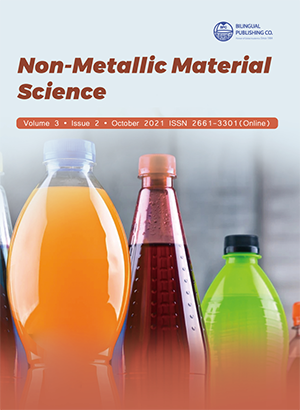-
920
-
908
-
876
-
506
-
392
Integrated Hazard Identification (IHI): A Quick Accident Analysis and Quantification Method for Practitioners
DOI:
https://doi.org/10.30564/nmms.v3i2.3730Abstract
There are many techniques for hazard identification and are divided into shortcut, standard and advanced techniques. Among these, HAZOP and What-If techniques are mostly engaged by practitioners in the chemical process industry. Both of these have certain advantages and limitations, i.e., HAZOP is structured, and what-if covers broad range of scenarios. There is no hazard identification method, which can cover a broad range of scenarios and is structured in nature. For this purpose, a new technique namely integrated hazard identification (IHI) is proposed in this article that integrates HAZOP and What-If. The methodology is demonstrated via hazard identification study of urea synthesis section. Risk ranking is used to sort out the worst-case scenario. This worst-case scenario is further studied in detail for quantification that is performed using the ALOHA software. This quantification has assisted to detect ammonia concentrations in nearby control room and surroundings for worst-case scenario. It is revealed that if ammonia pump is not stopped within 10 minutes, concentration inside and outside the control room may reach to 384 ppm and 2630 ppm, compared to 1100 ppm (AEGL-3). Thus the proposed method would be easy, time saving and covers more details and would be handy for practicing engineers working in different chemical process industries.Keywords:
Integrated hazard identification, HAZOP, What-if, Risk assessment, Risk matrixReferences
[1] CSB (U.S. Chemical Safety and Hazard Investigation Board), Investigation Report, West Fertilizer Company Fire and Explosion: WEST, TX. R, Jan, 2016.
[2] L. insider, (2010). Coffeyville Nitrogen Fertilizer Plant Adjusts Turnaround Dates: CVR Energy, R, Retrieved, https://www.lawinsider.com/contracts/2TwRT2x8GqCkV1lUFnK4vK/cvr-energy-inc/0/2010-10-01.
[3] Wikipedia, (2019). Port Neal fertilizer plant explosion, C, Retrieved 1st October, 2019, https://en.wikipedia.org/wiki/Port_Neal_fertilizer_plant_explosion.
[4] N. Hyatt, Guidelines for Process Hazards Analysis (PHA, HAZOP), Hazards Identification, and Risk Analysis. M. 1st ed. CRC Press, 2003.
[5] K. van Nunen, G. Reniers, and K. Ponnet. Measuring and improving safety culture in organisations: an exploration of tools developed and used in Belgium. [J]. Journal of Risk Research, 21. 5. (2018), 622-644, https://doi.org/10.1080/13669877.2016.1235602.
[6] T. Aven and M. Ylönen. How the risk science can help us establish a good safety culture. [J]. Journal of Risk Research. (2021), 1-19, https://doi.org/10.1080/ 13669877.2020.1871056.
[7] M. Kaszniak. Oversights and omissions in process hazard analyses: Lessons learned from CSB investigations. [J]. Process Safety Progress, 29. 3. (2010), 264-269, https://doi.org/10.1002/prs.10373.
[8] M.I. Rashid, N. Ramzan, and Q. Almas. Incident investigation in Pakistan's fertilizer industry—Common safety management system failures and issues. [J]. Process Safety Progress, 33. 4. (2014), 399-404, https://doi.org/10.1002/prs.11664.
[9] M.I. Rashid, C.H. Ali, K. Mukhtar, E. Benhelal, and M. Athar. Operational discipline in practice. [J]. Process Safety Progress, 40. 2. (2021). e12207, https:// doi.org/10.1002/prs.12207.
[10] M.I. Rashid, N. Ramzan, T. Iqbal, S. Yasin, and S. Yousaf. Implementation Issues of PSM in a Fertilizer Plant: An Operations Engineer's Point of View. [J]. Process Safety Progress, 32. 1. (2013), 59-65, https:// doi.org/10.1002/prs.11553.
[11] M. Athar, A. Mohd Shariff, A. Buang, M. Shuaib Shaikh, and M. Ishaq Khan. Review of Process Industry Accidents Analysis towards Safety System Improvement and Sustainable Process Design. [J]. Chemical Engineering & Technology, 42. 3. (2019), 524-538, https://doi.org/10.1002/ceat.201800215.
[12] N. Ramzan and W. Witt, Fundamental aspects to improve risk potential assessment of chemical process industry, in 18th European Symposium on Computer Aided Process Engineering – ESCAPE 18, 2008.
[13] J. Dunjó, V. Fthenakis, [J].A. Vílchez, and [J]. Arnaldos. Hazard and operability (HAZOP) analysis. A literature review. [J]. Journal of Hazardous Materials, 173. 1. (2010), 19-32, https://doi.org/10.1016/ j.jhazmat.2009.08.076.
[14] M.I. Rashid and N. Ramzan, Urea Synthesis Hazard Analysis: PHA, HAZOP and Quantitative Risk Assessment. Book. LAP LAMBERT Academic Publishing, 2012.
[15] S.A.H. Guidelines, Guidelines for conducting HAZOP studies, Loss prevention department Saudi Aramco, 2017.
[16] P.K. Marhavilas, D. Koulouriotis, and V. Gemeni. Risk analysis and assessment methodologies in the work sites: On a review, classification and comparative study of the scientific literature of the period 2000–2009. [J]. Journal of Loss Prevention in the Process Industries, 24. 5. (2011), 477-523, http://doi. org/10.1016/j.jlp.2011.03.004.
[17] M. Athar, A.M. Shariff, and A. Buang. A review of inherent assessment for sustainable process design. [J]. Journal of Cleaner Production, 233. (2019), 242- 263, https://doi.org/10.1016/j.jclepro.2019.06.060.
[18] M.I. Rashid, Urea synthesis hazard analysis and simulation studies, University of Engineering & Technology, Lahore, Pakistan, 2012.
[19] M.I. Rashid and N. Ramzan. Fluid Mechanics and Heat-Transfer Operations Combination Involved in Urea Unit of Fertilizer Complex. [J]. Non-Metallic Material Science, 1. 1. (2019), 5-10, https://doi. org/10.30564/nmms.v1i1.515.
[20] N.R. Council, Acute Exposure Guideline Levels for Selected Airborne Chemicals: Volume 3. Book. Vol. 3. National Academies Press, 2003.




 Muhammad Imran Rashid
Muhammad Imran Rashid





